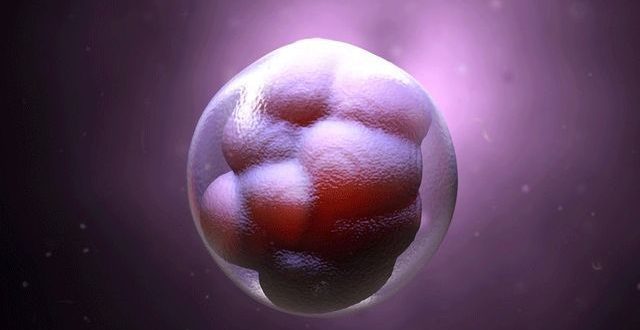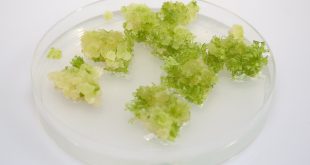Creating a fully-formed organism from a single cell is one of the most remarkable feats of biology. While this may seem like a daunting task, every living organism begins its life as a single cell that has the potential to differentiate and develop into every type of cell found in the human body. This extraordinary ability of a single cell to give rise to an entire organism is known as cellular totipotency.
In this article, we will explore the fascinating concept of cellular totipotency and delve into its mysteries. We will examine the latest research on this subject and provide a detailed overview of how a single cell can develop into a fully-formed organism.
What is Cellular Totipotency?
Cellular totipotency is the ability of a single cell to differentiate and develop into all the different types of cells that are required to form a fully-formed organism. This remarkable ability is found in a variety of different organisms, including plants, animals, and even some bacteria. In animals, most cells (other than stem cells), as they differentiate into specific cell types, lose the potential to reconstitute a new organism. However, all living plant cells retain the potential to revert back to the meristematic state and form new plants on exposure to favorable conditions, irrespective of their specialization and ploidy level (haploid, diploid, or triploid).
In short, totipotency is the ability of a cell or tissue or organ to grow and develop into a fully differentiated organism. A totipotent cell is a cell that has the potential to give rise to both embryonic and extra-embryonic tissues, which are required to form a complete and complex organism if given the right signals and conditions.
*Totipotent cells are most commonly found in the early stages of development, such as the zygote (fertilized egg) and the morula (a ball of cells that forms after the zygote undergoes several rounds of cell division). In mammals, totipotent cells are present in the first few cell divisions after fertilization, before the embryo implants into the uterus.
Non-Totipotent Plant Cells
Non-totipotent plant cells are those that have lost the ability to differentiate into a full organism due to epigenetic modifications, such as DNA methylation and histone modifications. These modifications can cause certain genes to become permanently silenced, limiting the developmental potential of the cell. Examples of non-totipotent plant cells include mature and fully differentiated cells such as root, stem, and leaf cells. These cells are specialized for specific functions and have lost their ability to divide and differentiate into other cell types.
In contrast, totipotent plant cells are found in the meristem tissues of the plant, such as the apical meristem, lateral meristem, and intercalary meristem. These tissues contain stem cells that have the ability to divide and differentiate into any cell type in the plant, making them totipotent.
The History of Cellular Totipotency
- In 1838 Schwann and Schleiden put forward the so-called “Totipotency” theory which states that cells are autonomic and in principle are capable of generating a complete plant. This theory was in fact the foundation of plant cell and tissue culture.
- The term “Cellular totipotency” was first coined by T.H. Morgan (1901).
- However, it was the famous German plant physiologist, Göttilieb Haberlandt, who in his famous address to the German Academy in 1902 introduced the concept of cellular totipotency and suggested that the terminally differentiated plant cells as long as they contain the entire complement of chromosomes, should be capable of regenerating whole plants. He made a novel approach to prove his hypothesis, in which single cells were isolated from highly differentiated tissues of the plant body and cultured in a nutrient medium. Due to technical limitations at that time, he did not succeed in his experiments. But his idea attracted the attention of many scientists to pursue this line of investigation.
- In 1939 White reported reproducible differentiation of shoot buds in tissue cultures of tobacco.
- In 1965, Basil and Hilderbrandt achieved the regeneration of full plants from isolated single cells of tobacco.
- In 1975, it became possible to regenerate complete plants from mesophyll protoplasts of tobacco.
- The study of cellular totipotency began in the early 20th century when German scientist Hans Spemann conducted groundbreaking experiments on frog embryos. Spemann discovered that by isolating a single cell from a frog embryo and transplanting it into a second embryo, he could induce the development of a second, fully-formed tadpole. This demonstrated that a single cell possessed the ability to give rise to an entire organism.
How Cellular Totipotency Works
The ability of a single cell to give rise to a complete organism is due to the process of cell differentiation. During development, totipotent cells undergo a series of cell divisions and differentiation events that gradually restrict their developmental potential. For example, totipotent cells give rise to pluripotent cells, which can differentiate into any cell type of the body, but not the extra-embryonic tissues. Pluripotent cells then give rise to multipotent cells, which are further restricted in their differentiation potential.

*Pluripotent cells: Pluripotent cells are a type of stem cell that has the potential to differentiate into many different cell types in the body. These cells are characterized by their ability to give rise to all three germ layers of the early embryo: the endoderm, mesoderm, and ectoderm. As a result, they can form a wide variety of specialized cell types, including nerve cells, muscle cells, blood cells, and many others.
*Multipotent cells: Multipotent cells are a type of stem cell that are able to differentiate into a limited number of cell types within a specific tissue or organ. These cells are found in various parts of the body, such as the bone marrow, skin, and intestines, and are responsible for maintaining and repairing the tissue in which they reside. Unlike pluripotent cells, which have the potential to differentiate into any cell type in the body, multipotent cells have a more limited range of differentiation potential. For example, multipotent stem cells in the bone marrow can differentiate into different types of blood cells, but not into nerve cells or muscle cells.
Good to know
- The phenomenon of mature cells reverting back to a meristematic state is termed dedifferentiation.
- Regeneration of plants from callus or sometimes directly from the pre-existing meristematic cells is termed re-differentiation.
- Differentiation of one organ from another organ such as shoot from root explants of Arabidopsis is referred to as transdifferentiation.
Factors of Cellular Totipotency
While all cells possess the potential for cellular totipotency, not all cells will develop into fully-formed organisms. The ability of a cell to differentiate and specialize is influenced by a variety of factors, including its environment, genetic makeup, and epigenetic modifications. The process of cell differentiation is tightly regulated by a variety of signals, including growth factors, signaling molecules, and transcription factors. These signals activate specific genes in the cell, which in turn lead to changes in the cell’s structure and function.
For example, cells that are isolated from a developing embryo are more likely to retain their totipotency than cells that have already differentiated into specific cell types
Applications of Cellular Totipotency
The ability to generate fully-formed organisms from a single cell has significant implications for fields ranging from developmental biology to regenerative medicine.
- In developmental biology, totipotency has helped scientists to better understand the early stages of embryonic development, and how different cell types arise from a single cell.
- In regenerative medicine, the ability to generate fully-formed organs from a single cell could have a major impact on the treatment of a variety of diseases and injuries. For example, researchers are exploring the use of totipotent cells to generate new tissues and organs for transplantation or to repair damaged tissues in the body.
Challenges and Future Directions
Despite the promise of cellular totipotency, there are still many challenges that must be overcome before its full potential can be realized. For example, the process of generating fully-formed organisms from a single cell is incredibly complex and requires a deep understanding of the molecular and cellular mechanisms involved. Additionally, there are ethical and safety concerns surrounding the use of totipotent cells, particularly in the context of human embryos.
Despite these challenges, however, the field of cellular totipotency is rapidly advancing and holds great promise for the future of developmental biology and regenerative medicine. With continued research and innovation, we may one day be able to generate fully-formed organs and tissues from a single cell, revolutionizing the way we treat a wide range of diseases and injuries.
References
- Plant Tissue Culture: An Introductory Text by S.S. Bhojwani.
 Plantlet The Blogging Platform of Department of Botany, University of Dhaka
Plantlet The Blogging Platform of Department of Botany, University of Dhaka



Fantastic read! I was especially impressed by the depth provided on the topic, offering a perspective I hadn’t considered. Your insight adds significant value to the conversation. For future articles, it would be fascinating to explore more to dive deeper into this subject. Could you also clarify more about the topic? It caught my interest, and I’d love to understand more about it. Keep up the excellent work!
Fantastic read! I was especially impressed by the depth provided on the topic, offering a perspective I hadn’t considered. Your insight adds significant value to the conversation. For future articles, it would be fascinating to explore more to dive deeper into this subject. Could you also clarify more about the topic? It caught my interest, and I’d love to understand more about it. Keep up the excellent work!
Your blog is a valuable resource.
Somebody essentially lend a hand to make significantly articles Id state That is the very first time I frequented your website page and up to now I surprised with the research you made to make this actual submit amazing Wonderful task